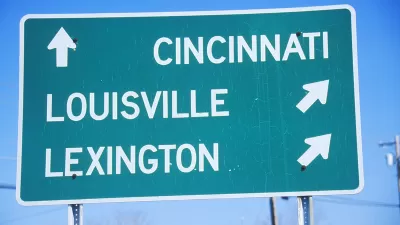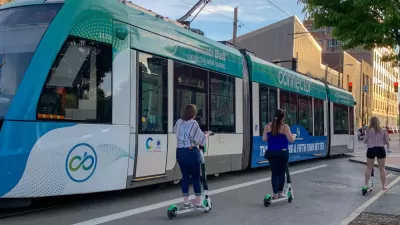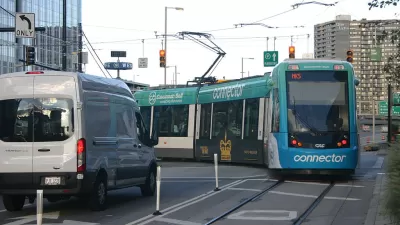A writer examines what it's like to live in the suburbs and work in the city of Cincinnati—to "exist in the physical and social margins" yet still play an active role in shaping the city's identity.

"I fancy myself a type of hipster homesteader," says Jenny Ustick in introducing a longread on the many dynamics of living in the suburbs of eastern Cincinnati.
A few highlights, by way of introducing this compelling article that describes changing times in Cincinnati:
"On a recent drive home, as warmth from my car’s engine was finally reaching my toes and I was putting distance between myself and the city, I realized that there is something similar about us commuters and the way the heat in my car works: convection. We move fluidly (and sometimes not so fluidly) in and out of the city limits, from neighborhood to neighborhood, through cuts in the rolling hills and in all the cardinal directions. It is a cycle, an exchange of capital, of information, and ideas. We leave our contributions, and we get things in return. And it’s not just true of me and my job and my automobile, but the history of the city and the people who have built its character."
"We do ourselves a disservice by tying assumptions about one’s philosophy, allegiance, or usefulness to proximity. I don’t have to live in the city proper, or want to, in order to do good work in the city. You don’t have to live in the suburbs. You don’t have to want to live in the suburbs. Neither of us should hold that against one another. In fact, you might be surprised at how much we have in common."
The article also includes analysis of the Cincinnati streetcar controversy, gentrification, and climate change.
FULL STORY: Neither Created Nor Destroyed

Alabama: Trump Terminates Settlements for Black Communities Harmed By Raw Sewage
Trump deemed the landmark civil rights agreement “illegal DEI and environmental justice policy.”

Study: Maui’s Plan to Convert Vacation Rentals to Long-Term Housing Could Cause Nearly $1 Billion Economic Loss
The plan would reduce visitor accommodation by 25% resulting in 1,900 jobs lost.

Why Should We Subsidize Public Transportation?
Many public transit agencies face financial stress due to rising costs, declining fare revenue, and declining subsidies. Transit advocates must provide a strong business case for increasing public transit funding.

Wind Energy on the Rise Despite Federal Policy Reversal
The Trump administration is revoking federal support for renewable energy, but demand for new projects continues unabated.

Passengers Flock to Caltrain After Electrification
The new electric trains are running faster and more reliably, leading to strong ridership growth on the Bay Area rail system.

Texas Churches Rally Behind ‘Yes in God’s Back Yard’ Legislation
Religious leaders want the state to reduce zoning regulations to streamline leasing church-owned land to housing developers.
Urban Design for Planners 1: Software Tools
This six-course series explores essential urban design concepts using open source software and equips planners with the tools they need to participate fully in the urban design process.
Planning for Universal Design
Learn the tools for implementing Universal Design in planning regulations.
Caltrans
Smith Gee Studio
Institute for Housing and Urban Development Studies (IHS)
City of Grandview
Harvard GSD Executive Education
Toledo-Lucas County Plan Commissions
Salt Lake City
NYU Wagner Graduate School of Public Service




























